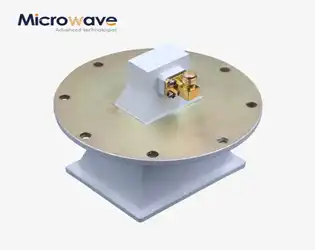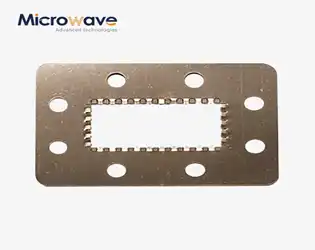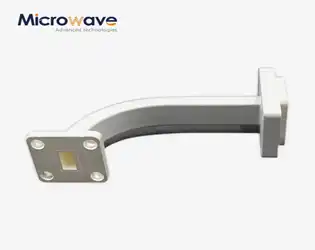BLOG

What is the difference between a fixed and variable attenuator?
November 10, 2025
In high-frequency signal management scenarios, engineers consistently face a critical challenge: maintaining precise control over signal strength without introducing distortion or compromising system integrity. Whether you're calibrating a satellite ground station, optimizing radar performance, or conducting advanced microwave testing, selecting the appropriate attenuator type directly impacts measurement accuracy, system reliability, and overall operational efficiency. The fundamental distinction between fixed and variable attenuators lies in their adjustability capabilities, but understanding the nuanced differences in design architecture, application scenarios, and performance characteristics is essential for making informed procurement decisions. A Waveguide Fixed Attenuator provides predetermined, unchangeable attenuation values ideal for permanent installations requiring consistent signal reduction, while variable attenuators offer dynamic control for applications demanding real-time adjustments across varying operational conditions.
A Metasurfaced Pyramidal Horn Antenna for Circularly-Polarized Applications
November 7, 2025
When satellite communication systems demand circular polarization but your existing Pyramidal Linear Polarization Horn Antenna only provides linear polarization, you face a critical challenge: signal degradation, polarization mismatch, and reduced system efficiency. The metasurface approach to converting pyramidal horn antennas from linear to circular polarization represents a breakthrough solution that addresses these pain points without requiring complete antenna replacement. This innovative technology combines the proven reliability of traditional pyramidal horn structures with advanced metasurface polarization converters, delivering circular polarization capabilities while maintaining high gain, compact dimensions, and cost-effectiveness for aerospace, defense, and satellite communication applications.
Sealing Solutions: The Waveguide Gasket
November 7, 2025
In high-frequency waveguide systems, even microscopic signal leakage can compromise communication integrity, radar accuracy, and system performance. Engineers in satellite communications, aerospace, and defense face a critical challenge: maintaining electromagnetic compatibility while preventing interference and signal degradation. The Waveguide Anti-leak Gasket emerges as an essential solution, providing reliable sealing that preserves signal integrity, blocks external electromagnetic interference, and ensures optimal system performance across demanding applications from air traffic control to military surveillance systems.
What’s the Difference Between a Double-bend Waveguide and a Single Bend Waveguide?
November 7, 2025
When designing compact microwave and millimeter-wave systems, engineers face a critical challenge: tight spaces demand sharp directional changes, yet signal integrity cannot be compromised. A Double-bend Waveguide solves this dilemma by employing two consecutive bends to achieve compact 90-degree routing while minimizing reflection losses that plague simpler configurations, making it indispensable for satellite communications, radar systems, and aerospace applications where both space efficiency and signal quality are non-negotiable.
How Can Double Ridged Flexible Waveguide Solve Your High-Frequency Signal Loss Problems?
November 6, 2025
In today's demanding microwave and millimeter-wave applications, engineers face a critical challenge: maintaining signal integrity while managing complex installation requirements. Traditional waveguides often fail when applications require both flexibility and minimal signal loss across broad frequency ranges. The Double Ridged Flexible Waveguide emerges as the definitive solution, addressing these pain points with advanced engineering that combines superior electrical performance with mechanical versatility. This innovative waveguide technology transforms how engineers approach high-frequency system design, offering unprecedented flexibility without compromising signal quality or operational reliability.
Flexible Twistable Waveguide Solves Complex Routing Challenges
November 6, 2025
In today's increasingly complex microwave systems, engineers face mounting pressure to fit high-performance communication components into ever-tighter spaces while maintaining signal integrity. Traditional rigid waveguides create installation nightmares, forcing costly system redesigns when confronted with obstacles, misalignments, or space constraints. The Flexible Twistable Waveguide emerges as the definitive solution, revolutionizing how modern communication systems navigate the challenge of complex routing while preserving optimal signal transmission performance across demanding applications from satellite communications to defense radar systems.
High Power Waveguide Isolators: Key Features & Uses
November 6, 2025
When transmitter systems face devastating signal reflections that threaten expensive equipment and compromise mission-critical operations, engineers turn to a specialized solution. High Power Waveguide Isolator technology stands as the essential safeguard that prevents reflected signals from traveling backward into sensitive components, ensuring system reliability in satellite communications, defense radar, and aerospace navigation. This comprehensive guide explores the key features, technical specifications, and diverse applications that make these components indispensable in modern microwave systems.
Everything You Need to Know About Custom Waveguide E Bend Solutions
November 5, 2025
When signal integrity collapses due to improper directional transitions in your high-frequency microwave system, critical missions fail. Custom Waveguide E Bend solutions address this exact challenge by enabling precise signal routing while maintaining exceptional performance across demanding applications in satellite communications, aerospace, and defense systems. Understanding how to select, customize, and implement the right Waveguide E Bend configuration can mean the difference between mission success and catastrophic system failure in environments where reliability is non-negotiable.




